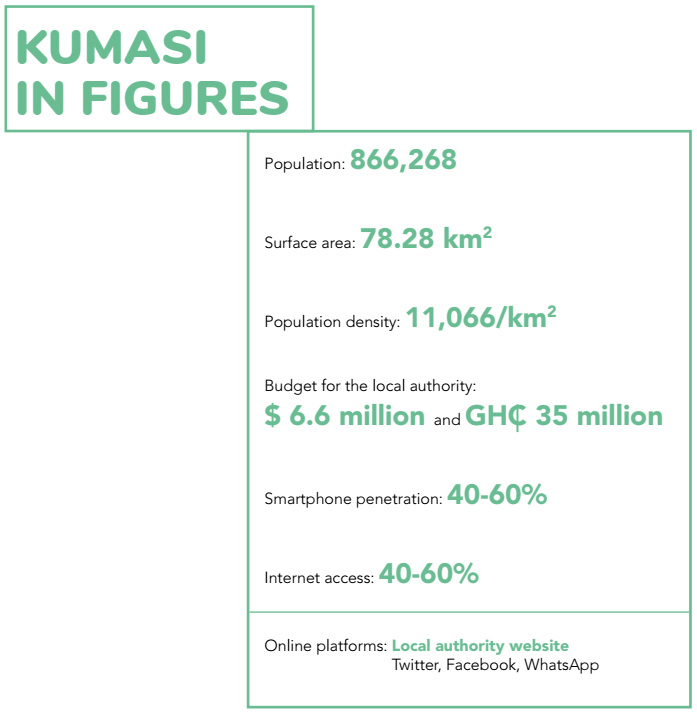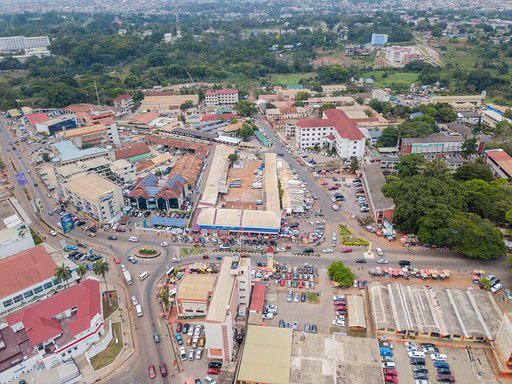Introduction
This section is the city profile for Kumasi. The profile attempts to present the most important information about Kumasi and the ASToN project, drawing on information gathered through a questionnaire and a 2-day city visit. Over the course of the city visit, the ASToN team facilitated workshops with the Kumasi Metropolitan Assembly (KMA) to understand their ambitions and concerns for the project.

About the city
 Kumasi is the commercial centre of Ghana, and is its second largest and most populous city, 270 km north of the capital, Accra. The city lies in a rainforest zone and is near the only freshwater lake of Ghana, Lake Bosomtwi.
Kumasi is the commercial centre of Ghana, and is its second largest and most populous city, 270 km north of the capital, Accra. The city lies in a rainforest zone and is near the only freshwater lake of Ghana, Lake Bosomtwi.
The city centre is a hub of cultural and economic activity, which results in Kumasi’s population approximately doubling during the working day, when it reaches almost 3 million people.
About the ASToN member
The ASToN member is the Kumasi Metropolitan Assembly (KMA), which is the Administrative and Political institution in charge of local governance. KMA is responsible for the planning, development and management of the Kumasi Metropolitan area, which is composed of 5 Sub-metros (boroughs). The mission of the KMA is to improve the quality of life of citizens through the provision of essential services and the creation of the enabling environment for the sustainable and inclusive development of Kumasi. The Assembly’s vision, as stated in the Medium Term Development Plan (2018-2021), is “to become a safe city and vibrant investment destination for both local and international investors”.
The KMA has some degree of autonomy from the national government, and is responsible for formulating legislation, plans, programmes and strategies at the local level for the development of the territory. The Assembly operates a 4-tier system of authority: Metropolitan Assembly, Sub-Metropolitan Council, Town Councils and Unit Committees. The Mayor is the Administrative and Political head of the Assembly and works with the Metro Coordinating Director, who has all 17 decentralised departments reporting to him.
KMA has semi-financial autonomy over the collection of certain levies, such as business operating permits and tolls. Income taxes are set and collected at the national level. As a local authority, KMA submits its development plans to the National Development Planning Commission, and its budgets to the Ministry of Finance through the Regional Coordinating Council.


